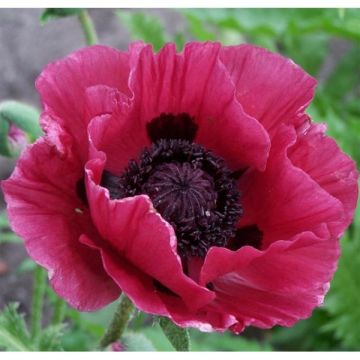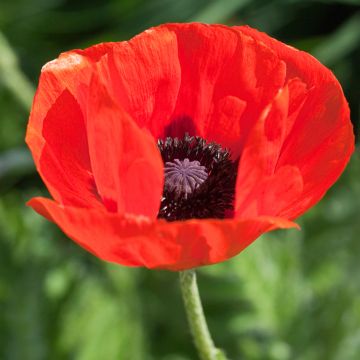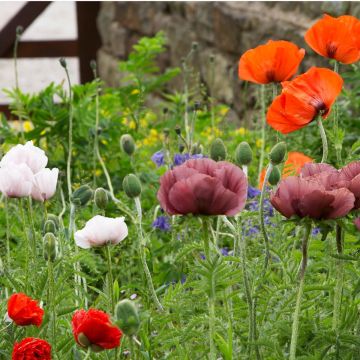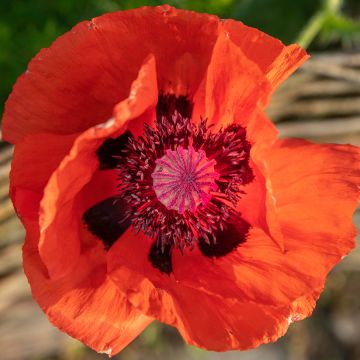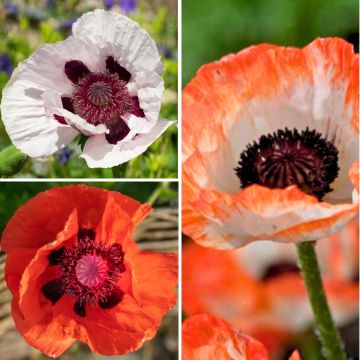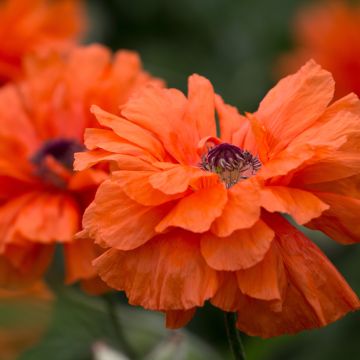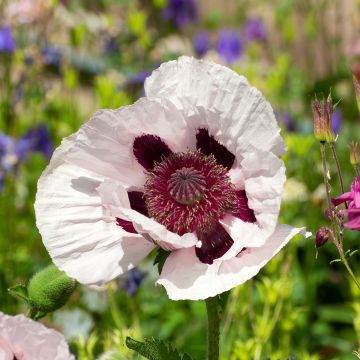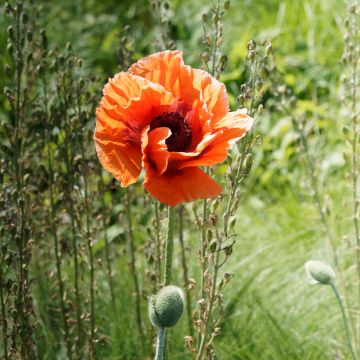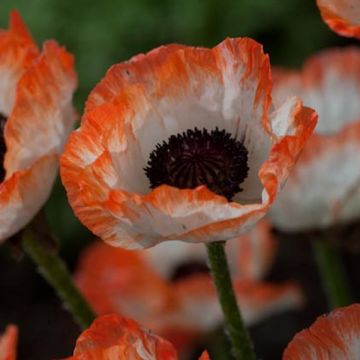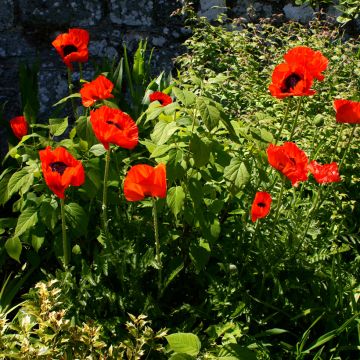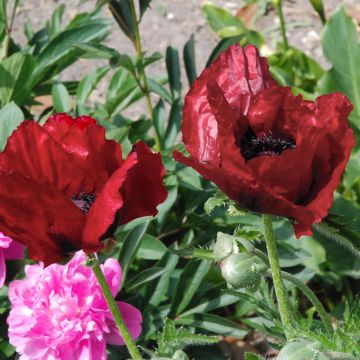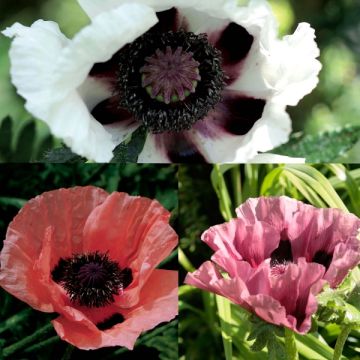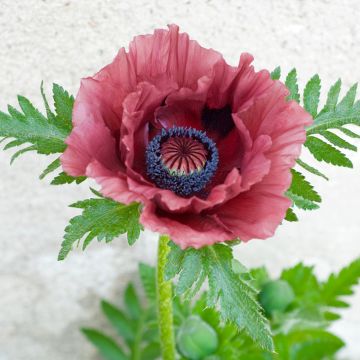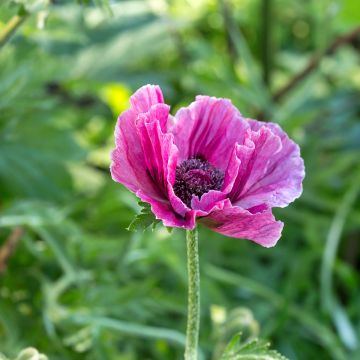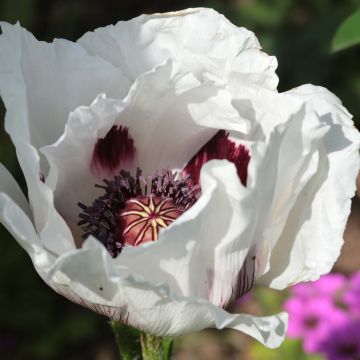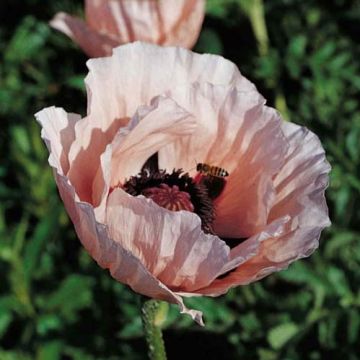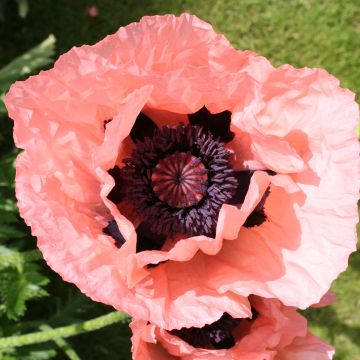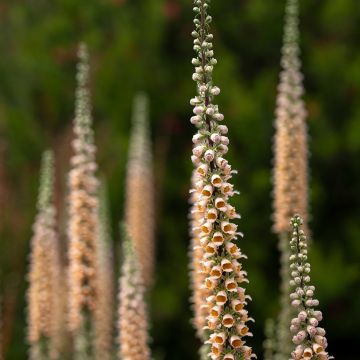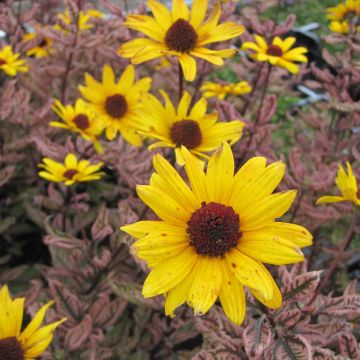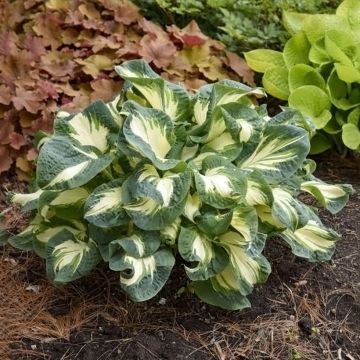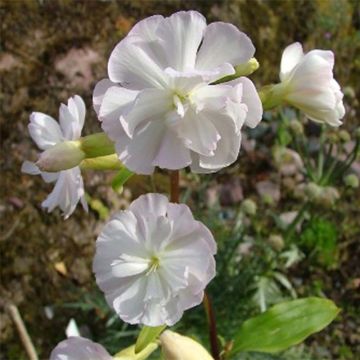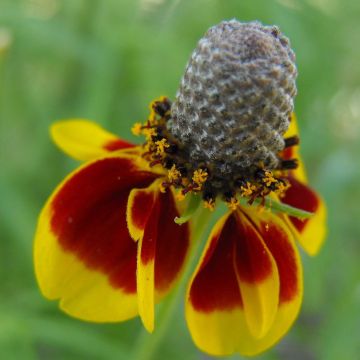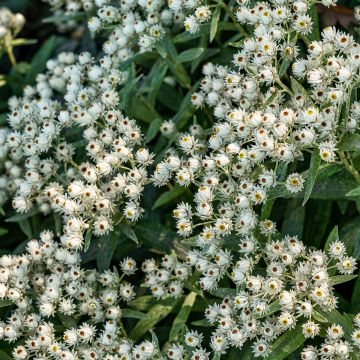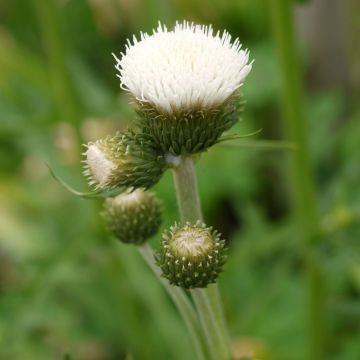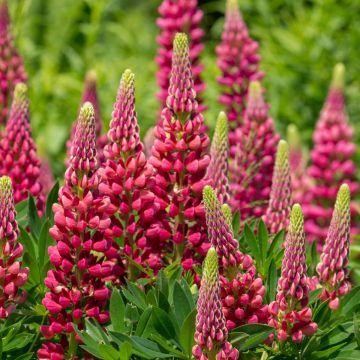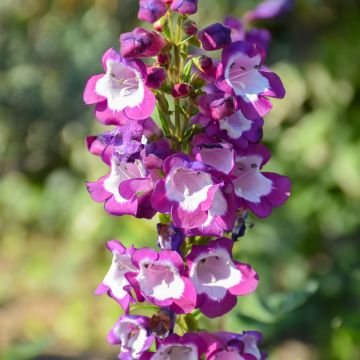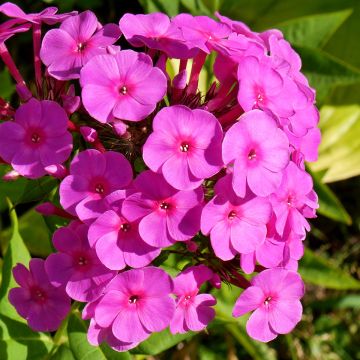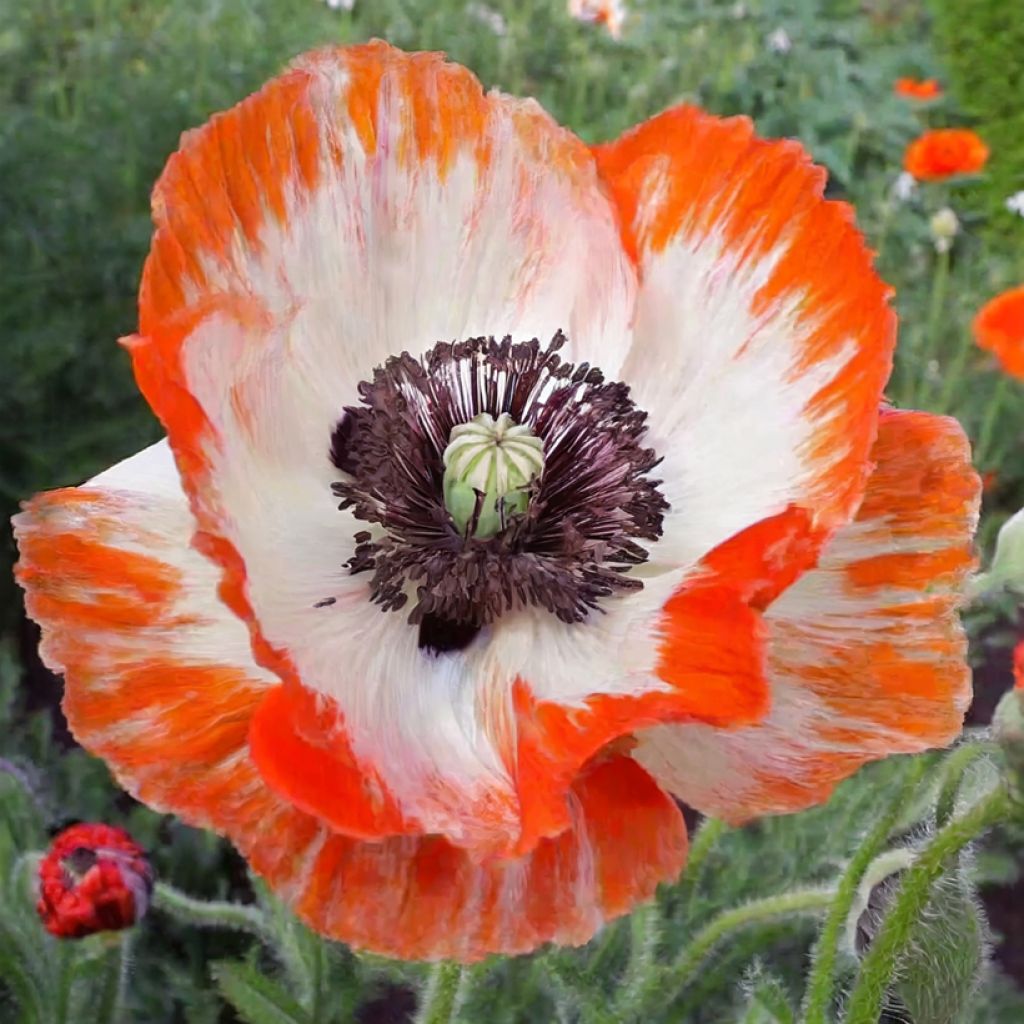

Papaver orientale 'Place Pigalle'
Papaver orientale 'Place Pigalle'
Papaver orientale Place Pigalle
Oriental poppy, Tournefort poppy,
Why not try an alternative variety in stock?
View all →This plant carries a 12 months recovery warranty
More information
We guarantee the quality of our plants for a full growing cycle, and will replace at our expense any plant that fails to recover under normal climatic and planting conditions.
From €5.90 for pickup delivery and €6.90 for home delivery
Express home delivery from €8.90.
From €5.90 for pickup delivery and €6.90 for home delivery
Express home delivery from €8.90.
Does this plant fit my garden?
Set up your Plantfit profile →
Description
The Papaver orientale 'Place Pigalle' is an original variety, easily recognizable by its short stems and bicoloured flowers. The single corollas are broad and carried by robust stems, resistant to bad weather. The white flowers are adorned with a contrasting red border in the upper part. The dark green, slightly bluish, cut foliage is also decorative and provides a dark vegetal background that enhances the flowers. Common in cottage gardens, the Oriental poppy is a hardy perennial and easy to grow in all good, deep soils in the sun.
The Pavot or Papaver is a member of the Papaveraceae family, which includes 42 genera and 775 species, including many flowering beauties such as Meconopsis with unreal blue flowers in certain species. The Oriental Poppy, or Tournefort's Poppy, is a perennial plant native to Asia Minor, introduced to France in the early 18th century. The botanical species grows from the Caucasus to Iran, passing through Turkey, where it forms perennial clumps, with the aboveground part dying in winter and reappearing in spring. Each wild plant develops a few villous stems from a compact tuft of cut leaves, each carrying a solitary flower. With a diameter of 10 to 15 cm (4 to 6in), the flower is formed by 4 to 6 petals, primarily red, sometimes white, orange, or lavender. Starting in late May, flowering is interrupted in July by the heat prevailing in these regions.
The Papaver orientale 'Place Pigalle' is a Dutch creation of a named range called "Parisienne". It is a compact variety, forming clumps that reach 45 cm (18in) in height (when flowering) and 35 cm (14in) in width. The leaves measure 15 to 20 cm (6 to 8in) in length, are cut and villous, and have a very decorative green-blue colour. They form a dense rosette, from which short and sturdy stems emerge from June to July, each carrying a solitary flower. The single flower usually measures 12 cm (5in) in diameter and is easily visible in the border—the white petals at the base and middle turn red in the upper part. When the flower fully opens, it reveals a purple heart formed by female and male floral parts, contrasting beautifully with the corolla. With a short lifespan, the flowers regularly renew, as this variety is quite floriferous. In mid-summer, the leaves dry up later than in other varieties due to the intense heat.
This 'Place Pigalle' Oriental Poppy, with its semi-natural, semi-sophisticated appearance, will feel equally at home in a sophisticated border or a more minimalist cottage garden. Pair it with spring-flowering perennials or shrubs and those that bloom in summer, and it will ensure a smooth transition between the two. The Frosted Flame Almond Spurge, another compact perennial, can accompany it at the edge of the border. Its variegated evergreen foliage turns dark pink in winter, and its chartreuse green-toned flowering extends from March to May. With its delicate green foliage, the Sand Pink will take over from July to September with its magnificent fringed white flowers. And to accompany it, a Lavender 'Hidcote' will be perfect with its dense dome of aromatic and evergreen green foliage, topped with a dark purple flowering whose fragrance is appreciated by all.
Report an error about the product description
Flowering
Foliage
Plant habit
Safety measures
Botanical data
Papaver
orientale
Place Pigalle
Papaveraceae
Oriental poppy, Tournefort poppy,
Cultivar or hybrid
atteintescutaneomuqueuses
Cette plante peut provoquer l'apparition de réactions cutanées indésirables, une atteinte des yeux, ou des difficultés respiratoires si elle est ingérée.
Ne la plantez pas là où de jeunes enfants peuvent évoluer. Evitez tout contact avec la peau: privilégiez l'emploi de gants pour la manipuler. En cas de contact, lavez-vous soigneusement les mains et rincez abondamment à l'eau la zone concernée. Lavez les vêtements entrés en contact. En cas de réaction cutanée, contactez votre médecin ou le centre antipoison le plus proche de chez vous. En cas d'atteinte étendue ou de difficultés respiratoires, appelez immédiatement le 15 ou le 112.Pensez à conserver l'étiquette de la plante, à la photographier ou à noter son nom, afin de faciliter le travail des professionnels de santé.
Davantage d'informations sur https://plantes-risque.info
Other Oriental Poppies (Papaver orientale)
Planting and care
The oriental poppy 'Place Pigalle' is a very hardy plant; it can withstand temperatures as low as -20°C (-4°F). Like most poppies, it is easy to grow. Any soil, even limestone, is suitable as long as it is well-drained and sufficiently deep. This plant dreads heavy, waterlogged soils in winter. The soil must also be deep so that its long, fleshy taproot can develop properly. Install it in full sun without fail. Cut off faded flower stems and clean up old foliage during the summer, but be careful to wear gloves, as the white latex secreted by the plant is toxic and can cause burns if it comes into contact with the eyes!
Planting period
Intended location
Care
This item has not been reviewed yet - be the first to leave a review about it.
Summer flowering perennials
Haven't found what you were looking for?
Hardiness is the lowest winter temperature a plant can endure without suffering serious damage or even dying. However, hardiness is affected by location (a sheltered area, such as a patio), protection (winter cover) and soil type (hardiness is improved by well-drained soil).

Photo Sharing Terms & Conditions
In order to encourage gardeners to interact and share their experiences, Promesse de fleurs offers various media enabling content to be uploaded onto its Site - in particular via the ‘Photo sharing’ module.
The User agrees to refrain from:
- Posting any content that is illegal, prejudicial, insulting, racist, inciteful to hatred, revisionist, contrary to public decency, that infringes on privacy or on the privacy rights of third parties, in particular the publicity rights of persons and goods, intellectual property rights, or the right to privacy.
- Submitting content on behalf of a third party;
- Impersonate the identity of a third party and/or publish any personal information about a third party;
In general, the User undertakes to refrain from any unethical behaviour.
All Content (in particular text, comments, files, images, photos, videos, creative works, etc.), which may be subject to property or intellectual property rights, image or other private rights, shall remain the property of the User, subject to the limited rights granted by the terms of the licence granted by Promesse de fleurs as stated below. Users are at liberty to publish or not to publish such Content on the Site, notably via the ‘Photo Sharing’ facility, and accept that this Content shall be made public and freely accessible, notably on the Internet.
Users further acknowledge, undertake to have ,and guarantee that they hold all necessary rights and permissions to publish such material on the Site, in particular with regard to the legislation in force pertaining to any privacy, property, intellectual property, image, or contractual rights, or rights of any other nature. By publishing such Content on the Site, Users acknowledge accepting full liability as publishers of the Content within the meaning of the law, and grant Promesse de fleurs, free of charge, an inclusive, worldwide licence for the said Content for the entire duration of its publication, including all reproduction, representation, up/downloading, displaying, performing, transmission, and storage rights.
Users also grant permission for their name to be linked to the Content and accept that this link may not always be made available.
By engaging in posting material, Users consent to their Content becoming automatically accessible on the Internet, in particular on other sites and/or blogs and/or web pages of the Promesse de fleurs site, including in particular social pages and the Promesse de fleurs catalogue.
Users may secure the removal of entrusted content free of charge by issuing a simple request via our contact form.
The flowering period indicated on our website applies to countries and regions located in USDA zone 8 (France, the United Kingdom, Ireland, the Netherlands, etc.)
It will vary according to where you live:
- In zones 9 to 10 (Italy, Spain, Greece, etc.), flowering will occur about 2 to 4 weeks earlier.
- In zones 6 to 7 (Germany, Poland, Slovenia, and lower mountainous regions), flowering will be delayed by 2 to 3 weeks.
- In zone 5 (Central Europe, Scandinavia), blooming will be delayed by 3 to 5 weeks.
In temperate climates, pruning of spring-flowering shrubs (forsythia, spireas, etc.) should be done just after flowering.
Pruning of summer-flowering shrubs (Indian Lilac, Perovskia, etc.) can be done in winter or spring.
In cold regions as well as with frost-sensitive plants, avoid pruning too early when severe frosts may still occur.
The planting period indicated on our website applies to countries and regions located in USDA zone 8 (France, United Kingdom, Ireland, Netherlands).
It will vary according to where you live:
- In Mediterranean zones (Marseille, Madrid, Milan, etc.), autumn and winter are the best planting periods.
- In continental zones (Strasbourg, Munich, Vienna, etc.), delay planting by 2 to 3 weeks in spring and bring it forward by 2 to 4 weeks in autumn.
- In mountainous regions (the Alps, Pyrenees, Carpathians, etc.), it is best to plant in late spring (May-June) or late summer (August-September).
The harvesting period indicated on our website applies to countries and regions in USDA zone 8 (France, England, Ireland, the Netherlands).
In colder areas (Scandinavia, Poland, Austria...) fruit and vegetable harvests are likely to be delayed by 3-4 weeks.
In warmer areas (Italy, Spain, Greece, etc.), harvesting will probably take place earlier, depending on weather conditions.
The sowing periods indicated on our website apply to countries and regions within USDA Zone 8 (France, UK, Ireland, Netherlands).
In colder areas (Scandinavia, Poland, Austria...), delay any outdoor sowing by 3-4 weeks, or sow under glass.
In warmer climes (Italy, Spain, Greece, etc.), bring outdoor sowing forward by a few weeks.

































